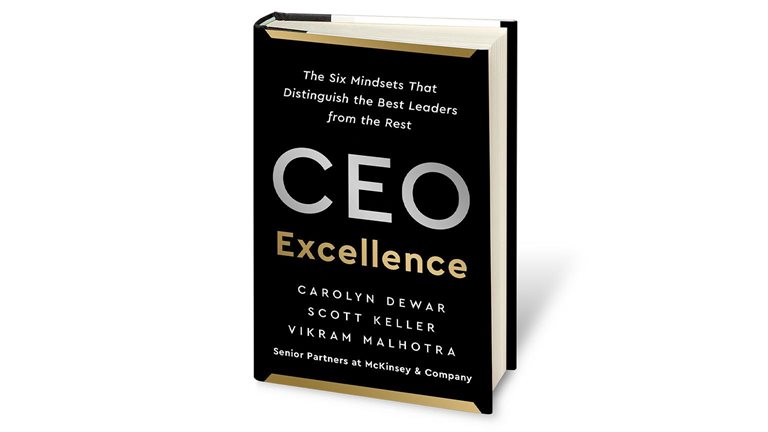Archives
- By thread 5193
-
By date
- June 2021 10
- July 2021 6
- August 2021 20
- September 2021 21
- October 2021 48
- November 2021 40
- December 2021 23
- January 2022 46
- February 2022 80
- March 2022 109
- April 2022 100
- May 2022 97
- June 2022 105
- July 2022 82
- August 2022 95
- September 2022 103
- October 2022 117
- November 2022 115
- December 2022 102
- January 2023 88
- February 2023 90
- March 2023 116
- April 2023 97
- May 2023 159
- June 2023 145
- July 2023 120
- August 2023 90
- September 2023 102
- October 2023 106
- November 2023 100
- December 2023 74
- January 2024 75
- February 2024 75
- March 2024 78
- April 2024 74
- May 2024 108
- June 2024 98
- July 2024 116
- August 2024 134
- September 2024 130
- October 2024 141
- November 2024 171
- December 2024 115
- January 2025 216
- February 2025 140
- March 2025 220
- April 2025 233
- May 2025 239
- June 2025 303
- July 2025 4
-
Why your boss may indeed be a psychopath
the Daily read
Be incorruptible .
Share this email 



AN ARTICLE A DAY, PICKED BY OUR EDITORS 
Ever wondered if your boss is a psychopath? You’re not alone. But if it’s true that “bad, abusive people are disproportionately likely to seek power, disproportionately good at getting it, and likely to become worse once they wield it,” then what’s the solution? That is the loaded question Brian Klaas explores in his new book, Corruptible: Who Gets Power and How It Changes Us. In a new Author Talks interview, Klaas lends his insight on how companies can rethink traditional approaches and shift mindsets to get better leaders at the helm. Be sure to check it out. — Emily Adeyanju, digital editor, New York 
Author Talks: Why your boss may indeed be a psychopath Brian Klaas, who spoke to some of the world’s most corrupt people, says we need to rethink the way we select our leaders. Be incorruptible 

Quote of the Day —Carolyn Dewar, McKinsey senior partner and coauthor of forthcoming McKinsey book CEO Excellence, on how excellent CEOs ensure they are effective 
Chart of the Day 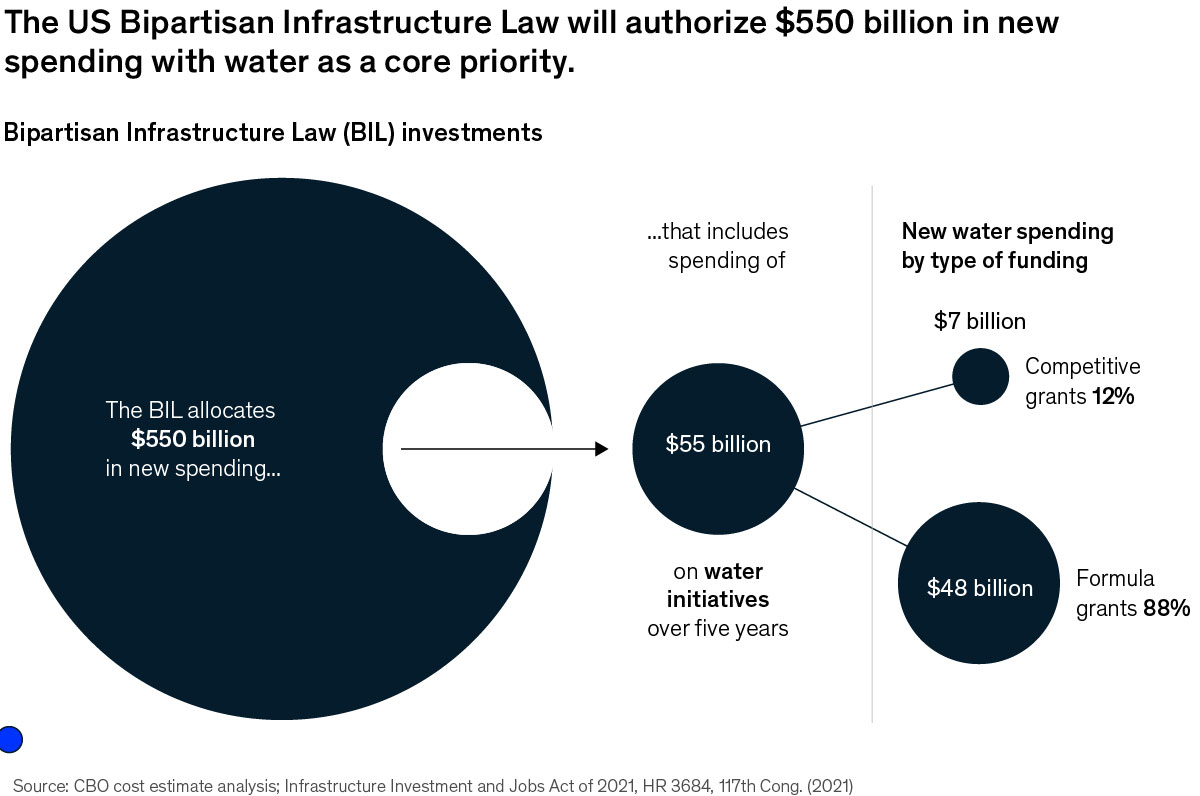
See today's chart 
Also New 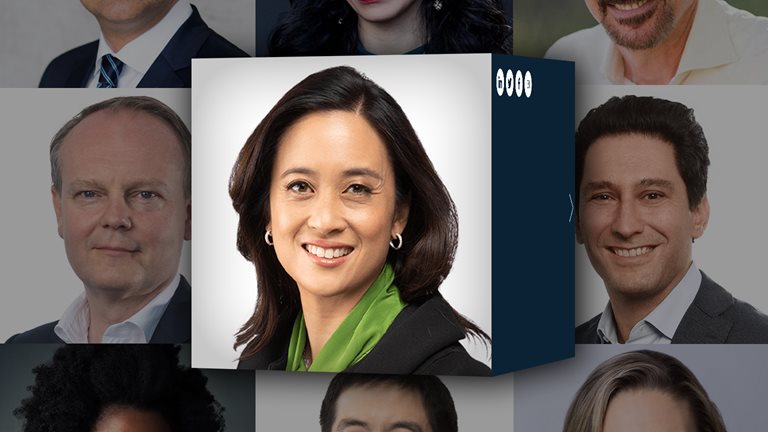

What technology trends will—and should—lead business agendas in 2022? We asked leaders in industry, academia, and at McKinsey to share their perspectives on the technology trends likely to headline business agendas this year, the ones that could—but shouldn’t—slip through the cracks, and what executives should think about when considering new technologies. Here is what they told us. Look to the future 


Repairing the broken rung on the career ladder for women in technical roles Women in technical roles are less likely than men to win promotions early in their careers, and many are exiting the field. Companies can strengthen workforces and boost performance by reversing this trend. End inequality 


Government transformation in times of great change Federal agencies are setting ambitious goals. What do agency leaders need to know about planning and directing successful transformations? Understand uncertain times 


Follow our thinking 



Share these insights Did you enjoy this newsletter? Forward it to colleagues and friends so they can subscribe too.
Was this issue forwarded to you? Sign up for it and sample our 40+ other free email subscriptions here.This email contains information about McKinsey’s research, insights, services, or events. By opening our emails or clicking on links, you agree to our use of cookies and web tracking technology. For more information on how we use and protect your information, please review our privacy policy. You received this email because you subscribed to the Daily Read newsletter. Manage subscriptions | Unsubscribe Copyright © 2022 | McKinsey & Company, 3 World Trade Center, 175 Greenwich Street, New York, NY 10007
by "McKinsey Daily Read" <publishing@email.mckinsey.com> - 06:24 - 10 Mar 2022 -
NEW: Calculate the cost of employment for any international employee!
NEW: Calculate the cost of employment for any international employee!

Hi MD,
We are thrilled to announce our newest feature on the Remote platform: the Total Cost of Employment Calculator! 🎉
Have you ever wondered how much it really costs to hire an employee in a new country? You’re not alone.
Global employment and tax laws are confusing and constantly changing, and the nuances involved are not always accounted for in many online tools. This can make it hard to budget for new hires or know the best countries to hire in.
But with the Total Cost of Employment Calculator, you can access Remote's global hiring expertise at your fingertips! Our tool helps you understand the cost to hire based on the employee’s location and salary, with a specific breakdown so you know exactly what’s involved and how much to budget for. You can also compare costs across different countries to see what countries make the most sense for your expansion plans.

When you get your quote, easily export the information as a PDF to share with your team, or start onboarding your new employee right away in Remote!
We'll be continuing to work with our users on expanding the functionality in this powerful tool, with the inclusion of estimated costs of core benefits in each country coming soon.

International hiring has never been easier.
Login or sign up now to start using the Total Cost of Employment Calculator!
You received this email because you are subscribed to Marketing communications from Remote Technology, Inc.
Update your email preferences to choose the types of emails you receive.
Unsubscribe from all future emailsRemote Technology, Inc.
Copyright © 2022 Remote Technology, Inc. All rights reserved.
18 Bartol St. #1163 San Francisco California
by "Remote" <hello@remote-comms.com> - 09:07 - 10 Mar 2022 -
From salt farmer to solar technician
Intersection Subject Line
Women salt farmers are training for better jobs in a growing industry .
Share this email 



DELIVERING ON DIVERSITY, GENDER EQUALITY, AND INCLUSION 
In this issue, we look at women leading climate action and why an intersectional approach is necessary to get more women up the career ladder in tech. THE ZEITGEIST Stone-cold capture 
‘Gender equality today for a sustainable tomorrow.’ That’s the theme of International Women’s Day 2022, and the message behind it is simple: the world can’t effectively respond to climate change without the participation and leadership of women, who are bearing the brunt of its effects. One woman working on the cutting edge of climate action: Dr. Edda Sif Pind Aradóttir. Dr. Aradóttir (pictured above at a geothermal power plant) is the CEO of Carbfix, a Reykjavík-based start-up that has developed technology to pump carbon into the Icelandic basalt bedrock, where it turns into stone within just a few years. Carbon capture alone won’t solve the climate crisis—and it’s certainly not carte blanche for emissions—but McKinsey research shows that carbon capture, use, and storage is essential to getting on a 1.5°C pathway and averting the worst effects of climate change. 
Another important part of the puzzle: renewable energy, including solar and wind. Hopping continents, here’s a look at how one of India’s largest renewable-energy companies, ReNew Power, is working to advance gender equality. ReNew is working with the UN and other partners in the state of Gujarat to train 1,000 women salt farmers to become solar-panel and solar-pump technicians. (Pictured above: a woman farming salt in neighboring Rajasthan.) Vaishali Nigam Sinha, ReNew’s chief sustainability officer, says the goal is “to engage women’s interest in an industry that will grow—and enable them to become clean energy leaders in India.” THE STAT 52 women for every 100 men In technical roles across industries (think engineering and product management), for every 100 men who are promoted to manager, only 52 women are promoted. That’s according to the latest Women in the Workplace data on companies in Canada and the US. The figure has serious implications, especially considering that diversifying the tech workforce is key to tackling bias in AI and other technologies. What will it take to get more women into technical roles and up the career ladder? Research by McKinsey and Pivotal Ventures points to the importance of collecting disaggregated data (broken down by gender, race, and ethnicity) at every stage of the pathways into tech. Treating women as a monolithic group means that companies will miss critical insights about the different experiences and challenges that particular communities of women face (the digital divide, for example). Collecting disaggregated data can help companies identify drop-offs in recruitment, promotion, and retention and design interventions that fit the distinct experiences of different groups of women. Transparency and accountability are also key. Companies across industries can help ensure that they make progress toward equity by publishing intersectional data on their employees and leadership. McKinsey analysis shows that while many companies do not publicly disclose their workforce demographics, leading organizations measure a comprehensive set of metrics and share their progress with the public. A recent report by the National Academies of Sciences, Engineering, and Medicine sheds light on why it’s important for employers to take an intersectional approach to advancing gender parity in tech and to be transparent about the makeup of their workforce. In the words of Dr. Valerie Taylor of the Argonne National Laboratory, a coeditor of the report, “The term ‘women’ must reflect the experiences of all women.” The report notes that Black women account for only 3 percent of the tech workforce, Latina women 1 percent, and Indigenous women less than half a percent. Some companies are on the case. Members of the Reboot Representation coalition, for example, collect and share disaggregated data on their diversity and inclusion investments and initiatives. Here’s the latest from McKinsey and the global nonprofit Girls in Tech on how employers can ensure equitable advancement in early-career promotions—particularly that first step up to manager. — Edited by Julia Arnous, an editor in McKinsey’s Boston office 

Follow our thinking 



Share these insights Did you enjoy this newsletter? Forward it to colleagues and friends so they can subscribe too.
Was this issue forwarded to you? Sign up for it and sample our 40+ other free email subscriptions here.This email contains information about McKinsey’s research, insights, services, or events. By opening our emails or clicking on links, you agree to our use of cookies and web tracking technology. For more information on how we use and protect your information, please review our privacy policy. You received this email because you subscribed to the Intersection newsletter. Manage subscriptions | Unsubscribe Copyright © 2022 | McKinsey & Company, 3 World Trade Center, 175 Greenwich Street, New York, NY 10007
by "McKinsey Intersection" <publishing@email.mckinsey.com> - 01:12 - 10 Mar 2022 -
Tried a new way to shop? So have most of India’s grocery shoppers
McKinsey&Company
Our report shows how grocery retailing is changing in India .

India’s food shoppers: App-happy The news • The ‘power of one.’ It’s boom time for India’s digital economy. Expected to reach $800 billion by 2030—up from $90 billion in 2020—the market has given rise to the “SuperApp”: a one-stop digital destination for groceries, ride hailing, banking, and more. Companies compete to win over consumers and to keep them coming back. The power of one is enticing in an era of hyperpersonalization, says a start-up adviser. [Fortune India] • Pedal to the metal. Grocery start-ups in India are promising consumers grocery deliveries within ten minutes. Two rival companies—one founded by a pair of 19-year-old college dropouts and valued at $570 million—are packing grocery orders in warehouses and dispatching bicycle riders to make deliveries. Although consumers are eager for the convenience of “quick commerce,” India’s pothole-ridden roads, where animals wander onto highways, can be dangerous. “We get five to six minutes, and I feel tense and fear for my life,” said one delivery worker. [Reuters] 
More than 60% of consumers in India intend to continue using online channels as an alternative to in-store shopping. 
Our insights • New behaviors. India’s grocery retail landscape is changing rapidly. During the COVID-19 pandemic, 93% of consumers in India tried a new shopping method, including curbside pickups and delivery apps, according to a McKinsey survey. Online grocery retailing in India could reach $10 billion to $12 billion by 2025, up from $2 billion to $3 billion in 2020. Despite this fast growth, earning a profit remains challenging for online grocers, given their high operating costs. • Eating right. India’s grocery shoppers are focusing more on health and nutrition when they buy groceries. About 70% of the respondents said they would spend more on healthy and nutritious groceries in 2021 than they did in 2020, our survey reveals. Half of these health-focused consumers said they would spend more on organic foods. See our report for more trends in consumer preferences and how brands and retailers in India can respond to ever-intensifying competition. — Edited by Belinda Yu Get the report 
Was this forwarded to you? Sign up here. Or send us feedback — we’d love to hear from you. 

Follow our thinking 


This email contains information about McKinsey’s research, insights, services, or events. By opening our emails or clicking on links, you agree to our use of cookies and web tracking technology. For more information on how we use and protect your information, please review our privacy policy. You received this email because you subscribed to the On Point newsletter. Manage subscriptions | Unsubscribe Copyright © 2022 | McKinsey & Company, 3 World Trade Center, 175 Greenwich Street, New York, NY 10007
by "McKinsey On Point" <publishing@email.mckinsey.com> - 12:12 - 10 Mar 2022 -
How to play the new talent game and win back workers
the Daily read
Understand employee priorities .
Share this email 



AN ARTICLE A DAY, PICKED BY OUR EDITORS 
As of December 2021, more than 4.3 million people voluntarily quit their jobs. Indeed, the effects of the Great Attrition are real, but in this most recent wave, those who are quitting their jobs are leaving to take on very different roles—or leaving the workforce entirely. And the competition for talent is different now, too. So the big question is: how can companies bring employees back—and keep them? Check out this new article to learn the new rules of the talent game. — Babi Oloko, digital editor, New York 
Gone for now, or gone for good? How to play the new talent game and win back workers Nearly half of the employees who voluntarily left the workforce during the pandemic aren’t coming back on their own. Employers must go and get them. Here’s how to start. Understand employee priorities 

Quote of the Day “Companies that want people to be present and to optimize outcomes can embrace a more people-centered approach. The workplace is a company’s operating system and can be a significant differentiator” —Diane Hoskins, co-CEO of Gensler, on organizations creating human-centric workspaces in The rebirth of workspace design: An interview with Gensler co-CEO Diane Hoskins 
Chart of the Day See today’s chart 
Also New 

Autonomous supply chain planning for consumer goods companies To capitalize on analytics, consumer packaged goods organizations—especially in Asia—can build an integrated system with the power to oversee and control the entire supply chain from end to end. Rethink traditional processes 


‘Innovation is Islamic’: An interview with Boubyan’s CEO and vice chair Adel Abdul Wahab Al-Majed describes how prioritizing performance, setting high aspirations, and bubbling up ideas throughout the organization transformed Kuwait’s Boubyan Bank into a digital leader. Learn from a leader 


Developing an effective M&A blueprint for insurers The North American insurance industry needs systematic capabilities to support programmatic deal making. A good place to start is the where, why, and how of an effective M&A blueprint. Take a new approach 


Follow our thinking 



Share these insights Did you enjoy this newsletter? Forward it to colleagues and friends so they can subscribe too.
Was this issue forwarded to you? Sign up for it and sample our 40+ other free email subscriptions here.This email contains information about McKinsey’s research, insights, services, or events. By opening our emails or clicking on links, you agree to our use of cookies and web tracking technology. For more information on how we use and protect your information, please review our privacy policy. You received this email because you subscribed to the Daily Read newsletter. Manage subscriptions | Unsubscribe Copyright © 2022 | McKinsey & Company, 3 World Trade Center, 175 Greenwich Street, New York, NY 10007
by "McKinsey Daily Read" <publishing@email.mckinsey.com> - 06:43 - 9 Mar 2022 -
A 20-hour workweek?
Re:think
A new work schedule A lot of people are talking about the four-day workweek, but I think it’s more revealing to talk about the 20-hour workweek.
For people who want flexibility, 20 hours a week is a really manageable number. It’s particularly good for young people, who often want a solid gig but also value the side hustle that helps them find their purpose. And it’s excellent for older people who have recently retired. A huge part of their social life may well have been tied up with work. They might like to continue collaborating with peers, colleagues, and friends. And the work benefits may be better than what they’d get as retirees.
This should be a win–win. If a company could get access to loyal—not transactional—people who are excited to be at work, why wouldn’t it want that?
However, most companies don’t want to deviate from what they consider “normal”—a five-day, 40-hour workweek. (Which, by the way, is an artificial creation enshrined by laws passed more than 80 years ago.) Employers think anything else would be too complicated. But if they really examined what their talent force looks like, they’d see it’s quite complex already, full of “full-timers” with special arrangements, contractors deeply entwined with the company, freelancers who were once full-timers, and so on.
Another big convention that most employers don’t want to alter is offering benefits only to people working a standard 40-hour week. But perhaps that’s short-sighted. By lowering the bar to 20-hour weeks, they probably create a more reliable workforce, full of people who know the company and its culture and who are committed to it, because the company is helping them have a happier, more flexible life.
One outcome of the pandemic is that the employee–employer power dynamic has really shifted toward employees. Offering flexibility with benefits would go a long way to showing talent that employers are truly “invested in you.” Research clarifies that benefits are an even bigger “tie that binds” than hourly wages.
82
years ago, the Fair Labor Standards Act enshrined the 40-hour workweek
Now, 20 hours isn’t some magical number. My beef with the five-day workweek is that it’s a norm from long ago that hasn’t been adjusted to reflect the way that work has evolved. Like many proposals for four-day workweeks, it’s a mandate handed down from on high. So, maybe 25 hours is right. Maybe 30, even though that seems too high to me. The point is that affording employees this kind of flexibility would be both an honest recognition of today’s talent market and a way for companies to build lasting loyalty from employees—at a time when loyalty to corporations is at a low.
When it comes to having to go into an office every day of the week, the genie is out of the bottle. When we next hit a downturn in the economy, some employers will be tempted to think, “Now is our chance to get back to everyone in the office every day.” If that happens, you’ll see a bifurcation between those companies and more flexible firms. And I think those companies will be hurt because people no longer accept the idea that a company owns them. They think they deserve choice, and they’re not going to relinquish that easily. They’re going to get on social media and talk about their employers, and there’s going to be a cost to that.
But companies that are less entrenched in tradition and that offer workers real flexibility are going to create a workplace that’s compelling. At those companies, people will enjoy the feeling of going into the office.
I think there’s a good chance that within five years, employers offering 20-hour workweeks with benefits will become more of a norm. For the past two years-plus, employees have made their independence clearer than ever. It’s time for employers to acknowledge that reality and adjust their policies and expectations. Believe it or not, the workplace has changed from 80 years ago.
ABOUT THE AUTHOR
Bill Schaninger is a senior partner in McKinsey’s Philadelphia office.
MORE FROM THIS AUTHOR
‘Great Attrition’ or ‘Great Attraction’? The choice is yours
A record number of employees are quitting or thinking about doing so. Organizations that take the time to learn why—and act thoughtfully—will have an edge in attracting and retaining talent.
Losing from day one: Why even successful transformations fall short
Our latest transformations research confirms that success remains elusive and reliant on a holistic approach. Yet some actions are especially predictive of realizing the financial benefits at stake.
IN TWO WEEKSCarolyn Dewar on CEO Excellence
Deep new McKinsey research on CEO performance over the decades reveals that six mindsets distinguish the very best CEOs.
This email contains information about McKinsey’s research, insights, services, or events. By opening our emails or clicking on links, you agree to our use of cookies and web tracking technology. For more information on how we use and protect your information, please review our privacy policy.
You received this email because you subscribed to our McKinsey Quarterly alert list.
Copyright © 2022 | McKinsey & Company, 3 World Trade Center, 175 Greenwich Street, New York, NY 10007
by "McKinsey Quarterly" <publishing@email.mckinsey.com> - 03:25 - 9 Mar 2022 -
Remote's Fair Price Guarantee
Remote's Fair Price Guarantee
No commitments or "gotchas" along the way. Really.Hidden fees?
Deposit requirements?
Surprise transaction costs?
We don't believe in them.
A minimum number of hires or contract length?
Restrictive exclusivity agreements?
No way.
Whether you're bringing on your first international contractor or employee, or scaling up your global team, we have a perfect plan that can be upgraded or paused at any time. It's all part of our mission to make hiring the best international talent more accessible for businesses of any shape and size.
And don't forget our special pricing for startups, social purpose organizations, and hiring refugee talent!
Get access to the same powerful platform, HR experts, and localized legal support as big brands, at a fraction of the cost.
Book a free international hiring consultation.
You received this email because you are subscribed to Marketing communications from Remote Technology, Inc.
Update your email preferences to choose the types of emails you receive.
Unsubscribe from all future emailsRemote Technology, Inc.
Copyright © 2022 Remote Technology, Inc. All rights reserved.
18 Bartol St. #1163 San Francisco California
by "Remote" <hello@remote-comms.com> - 04:10 - 9 Mar 2022 -
Ever been hacked at home? Cybersecurity’s four big challenges in the remote-work era.
McKinsey&Company
Cybercrime and punishment .

Cybersecurity challenges The news • Zero trust. Who should you trust? In cybersecurity, the right answer increasingly appears to be “no one.” Many organizations are switching to “zero trust” security methods, which require that every user and device is verified continuously. With more data being stored in the cloud and millions of remote workers logging on from home, securing critical data is becoming even more important. The zero-trust security sector is projected to reach $51.6 billion in 2026, compared with $19.6 billion in 2020. [CNBC] • To err is human. Nearly 90% of data breaches occur when an employee makes a mistake. Cybersecurity isn’t just a problem to be relegated to IT: the whole organization must safeguard the company against cyberattacks. Boards of directors have a key role to play. Board members don’t need to become cybersecurity experts, but they should be knowledgeable about cyberthreats. At board meetings, it’s crucial to ask and answer questions about cybersecurity—including how the company detects breaches and how it plans to respond after an incident. [HBR] 
Organizations struggle with understanding how to measure the return or value of a dollar spent on cybersecurity, as well as how to communicate its value to stakeholders. 
Our insights • Visibility gaps. Cybercriminals are bombarding remote workers with an array of threats. For example, spear-phishing attacks—when hackers pose as a trusted contact to steal confidential data—have increased by nearly seven times since the start of the COVID-19 pandemic, according to a McKinsey survey. But even though cyberattacks are spiking, cybersecurity providers often don’t have the visibility they need into the digital infrastructure to recognize when, where, or why there is a problem. • Millions of vacant jobs. More than three million cybersecurity jobs remained unfilled in 2021, and that massive shortage of talent is affecting both clients and providers. Although technologies like AI and machine learning are helping to analyze threats, those technologies are only a supplement to the essential work of security analysts. See the four challenges that remain unsolved for providers of cybersecurity services and suggestions for how to address them. — Edited by Belinda Yu Confront cyber challenges 
Was this forwarded to you? Sign up here. Or send us feedback — we’d love to hear from you. 

Follow our thinking 


This email contains information about McKinsey’s research, insights, services, or events. By opening our emails or clicking on links, you agree to our use of cookies and web tracking technology. For more information on how we use and protect your information, please review our privacy policy. You received this email because you subscribed to the On Point newsletter. Manage subscriptions | Unsubscribe Copyright © 2022 | McKinsey & Company, 3 World Trade Center, 175 Greenwich Street, New York, NY 10007
by "McKinsey On Point" <publishing@email.mckinsey.com> - 12:30 - 9 Mar 2022 -
Women in insurance: Leading voices on trends affecting insurers
the Daily read
Browse the posts .
Share this email 



AN ARTICLE A DAY, PICKED BY OUR EDITORS 
What trends matter for the insurance industry today—digital? Growth and new business building? Diversity, equity, and inclusion? As the industry searches for new value-creation levers, all of these (and more) will matter. For fresh perspective, we asked 20 experts in insurance to unpack these and other important dynamics, offering insight on new technologies, new services, and new customers. This International Women’s Day, don’t miss a new series of short takes from women in the industry on insurance’s path forward. — Sarah Skinner, digital editor, New York 
Women in insurance: Leading voices on trends affecting insurers As part of our celebration of International Women’s Day 2022, female McKinsey partners offer insights into the latest in insurance: new technologies, new services, and new customers. Their expertise covers all relevant topics, functions, and lines of business. Browse the posts 

Quote of the Day "It begins with having diverse voices in leadership positions. Nextdoor neighborhoods reflect the diversity of the world; if we’re going to build a product for them, then we need to look like them." —Sarah Friar, CEO of Nextdoor, in a new article about what resilience means to her 
Chart of the Day 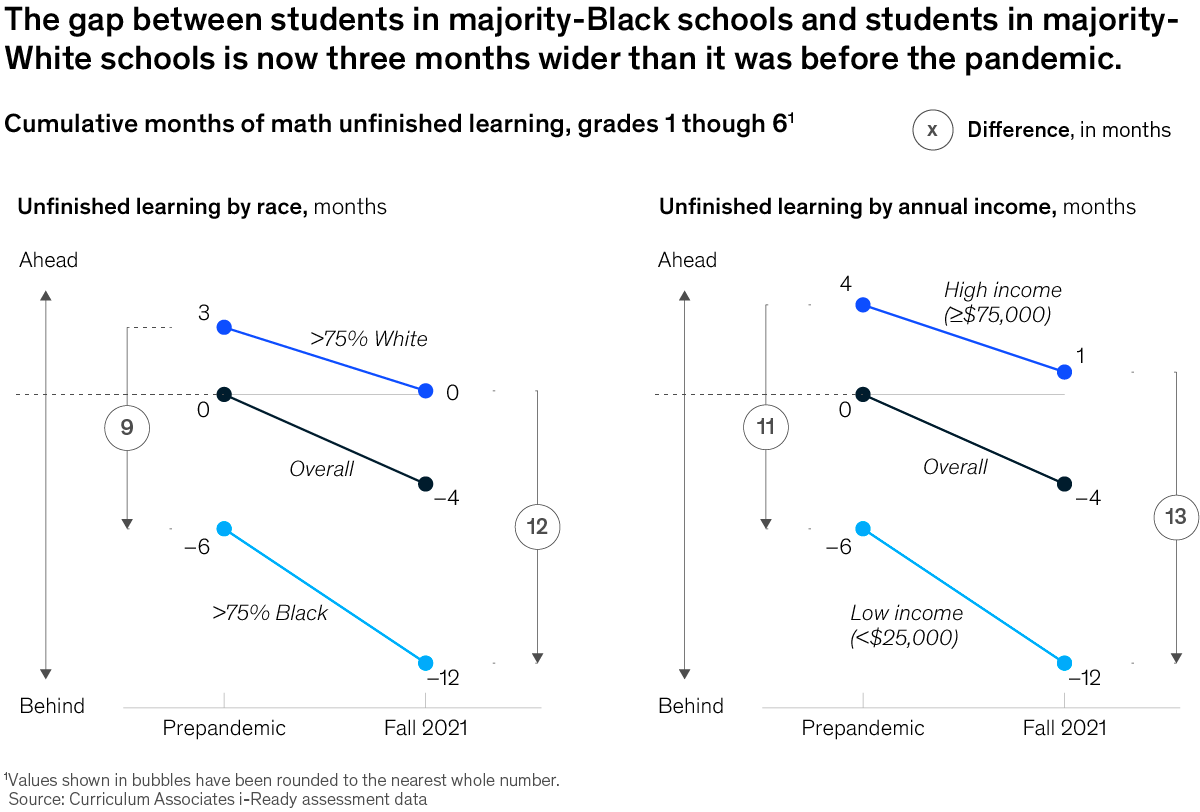
See today's chart 
Also New 
How to be an excellent CEO: Part 6 What if the world’s highest-performing CEOs held a master class to share the skills and practices that have driven their success over the years? Be your most effective 


The McKinsey Crossword: International Women’s Day | No. 66 Sharpen your problem-solving skills the McKinsey way, with our weekly crossword. Each puzzle is created with the McKinsey audience in mind, and includes a subtle (and sometimes not-so-subtle) business theme for you to find. Answers that are directionally correct may not cut it if you’re looking for a quick win. Play now 


Decarbonizing US gas utilities: The potential role of a clean-fuels system in the energy transition US natural gas utilities and combined electric and gas utilities have an opportunity to convert their infrastructure into clean-fuels networks—a move that could help enable a decarbonized energy system. Choose clean 


Follow our thinking 



Share these insights Did you enjoy this newsletter? Forward it to colleagues and friends so they can subscribe too.
Was this issue forwarded to you? Sign up for it and sample our 40+ other free email subscriptions here.This email contains information about McKinsey’s research, insights, services, or events. By opening our emails or clicking on links, you agree to our use of cookies and web tracking technology. For more information on how we use and protect your information, please review our privacy policy. You received this email because you subscribed to the Daily Read newsletter. Manage subscriptions | Unsubscribe Copyright © 2022 | McKinsey & Company, 3 World Trade Center, 175 Greenwich Street, New York, NY 10007
by "McKinsey Daily Read" <publishing@email.mckinsey.com> - 06:53 - 8 Mar 2022 -
[Webinar] How to calculate global compensation for your remote team? 🏆
[Webinar] How to calculate global compensation for your remote team? 🏆
Factors to consider when calculating compensation, how to account for benefits in different countries, and etc!Hi MD,
In this special event, three of Remote's global compensation experts host a special event to share their experiences, insights, and tips on how to create a fair, comprehensive, and equitable compensation philosophy for your distributed team.
- Factors to consider when calculating compensation
- How to account for benefits in different countries
- Tips for benchmarking and performance reviews
- How to incorporate mandatory local benefits, like 13th month pay or home office allowances
The session will end with a live Q&A, so be sure to bring your questions!
What is it like for your employees when you use Remote?
You received this email because you are subscribed to Events communication from Remote Technology, Inc.
Update your email preferences to choose the types of emails you receive.
Unsubscribe from all future emailsRemote Technology, Inc.
Copyright © 2022 Remote Technology, Inc. All rights reserved.
18 Bartol St. #1163 San Francisco California
by "Remote" <hello@remote-comms.com> - 01:00 - 8 Mar 2022 -
Automate your e-commerce processes with Shopify and NetSuite [product demo]
Tray Email
plus get lunch 🍽 on me when you join this Thursday at 10am PT/ 1pm ETHi Md,
This week learn how to automate the entire order-to-cash process with Shopify and NetSuite with low-code automation in under 30 minutes. 🚀
Join automation expert Foster King on Thursday, March 10 at 10am PT / 1pm ET to learn how this is possible with low-code automation.
Sign up below or reply to this email and I'll add you to the registration list.
Plus, I'll send you a $25 lunch gift card if you join live. Sander Buitelaar
Sander Buitelaar
HOST
 Foster King
Foster King
AUTOMATION EXPERT© Tray.io Inc. 25 Stillman Street, San Francisco, CA 94107, United States
by "Sander Buitelaar, Tray.io" <sander@tray.io> - 11:16 - 8 Mar 2022 -
Join our webinar, “Accelerating Digital Transformation with Observability”
Hi there,
I’d like to invite you to our webinar, “Accelerating Digital Transformation with Observability,” on Wednesday, March 23 at 14:00 CET.
We will begin the session with a discussion about the challenges that organizations face during a cloud migration—from building a CCoE to adopting a strong DevOps culture. We will also examine how these organizations must adjust their monitoring strategies for their new cloud environments, and how this transformation can impact their growth, costs, and assumed risks.
This discussion will be followed by a product demo, where we will showcase how Datadog's unified monitoring platform can help teams accelerate their migration. The event will close with a live Q&A session.
We look forward to hosting you virtually!
Cheers, Ali ShawTeam Lead, Sales Engineering
Ali ShawTeam Lead, Sales EngineeringVisit our email preference center to unsubscribe or change subscription options
©2022 Datadog Inc, 620 8th Ave, 45th Floor, New York, NY 10018This email was sent to info@learn.odoo.com.
by "Ali Shaw" <events@datadoghq.com> - 04:02 - 8 Mar 2022 -
Welcome to New Relic, please verify your email!

Hello,
Welcome! We recently received a request to create an account. To verify that you made this request, we're sending this confirmation email.
Or you can copy/paste the following URL into your browser:
https://signup-processor.service.newrelic.com/v1/signups/5751de02-c457-4329-9e58-bd4d05a5a48e?verification_token=dad510b1a33455c67917d16dThank you!
Sincerely,
The New Relic Team
Log in to New Relic | Find us online:


New Relic Inc. — 188 Spear Street, Suite 1200, San Francisco, CA 94105
Copyright © 2008–2022 New Relic, Inc. All rights reserved. All trademarks, trade names, service marks and logos referenced herein belong to their respective companies.
by "New Relic" <noreply@newrelic.com> - 03:11 - 8 Mar 2022 -
Younger, tech-savvy, brand aware—and underserved: Why Black consumer loyalty is up for grabs
McKinsey&Company
A $300 billion opportunity .

Serving the Black consumer The news • Bias in banking. People of color report deeply ingrained racial biases in the US financial-services sector. Nearly 50% of Latinx and 40% of Black respondents said they had to alter their appearance or behavior when interacting with banks, a 2021 Edelman survey revealed. Moreover, high-income Black consumers said they were asked to pay higher fees and to provide multiple forms of employment verification. Unfair treatment has led many consumers to switch banks, keep cash at home, or use alternatives such as cryptocurrency. [Fortune] • Breaking barriers in beauty. Black women spend six times the amount that White women do on beauty but often struggle to find products that suit them—for instance, hair extensions that match their natural textures. Now, a new crop of Black female founders is raising millions to launch brands that aim to serve consumers overlooked by the $2.4 billion wig and extensions industry. One US start-up recently raised $1.4 million to make hair extensions from natural plant fibers, which are gentler on scalps and cut down on waste from plastic. [FT] 
“Our analysis suggests that, because of the level of dissatisfaction, Black consumers are 25% more likely to switch brands.” 
Our insights • A lifetime of engagement. Companies that offer their goods and services in more Black communities and create products catering to Black households tap into a $300 billion opportunity each year, says McKinsey partner Shelley Stewart III in The McKinsey Podcast. “The median age of Black Americans is 34. That’s a decade younger than the median age for White Americans,” says Stewart. “If you can get these customers today, you can have a long life of engaging with these customers. So there’s vested interest in getting in early.” • A troubling gap. The three-and-a-half-year gap in life expectancy between Black and White Americans has stretched to five years during the COVID-19 pandemic, says Stewart. In fact, 16 million Black Americans live in areas that have too few healthcare providers, Stewart adds. Listen to the podcast for ways companies can adapt products to meet Black consumer needs, potentially growing their bottom lines while also transforming communities for the better. — Edited by Belinda Yu Invest in Black lives 
Was this forwarded to you? Sign up here. Or send us feedback — we’d love to hear from you. 

Follow our thinking 


This email contains information about McKinsey’s research, insights, services, or events. By opening our emails or clicking on links, you agree to our use of cookies and web tracking technology. For more information on how we use and protect your information, please review our privacy policy. You received this email because you subscribed to the On Point newsletter. Manage subscriptions | Unsubscribe Copyright © 2022 | McKinsey & Company, 3 World Trade Center, 175 Greenwich Street, New York, NY 10007
by "McKinsey On Point" <publishing@email.mckinsey.com> - 10:16 - 7 Mar 2022 -
What technology trends will—and should—lead business agendas in 2022?
the Daily read
Look to the future .
Share this email 



AN ARTICLE A DAY, PICKED BY OUR EDITORS 
There’s a lot happening in the world of tech right now. Quantum computing, artificial intelligence, cryptocurrency, and the metaverse have been getting a lot of buzz, and many will be watching to see how they evolve. But are those the trends that will resonate most with your business agenda this year? Experts from the McKinsey Technology Council weigh in on what should be on your radar. Get their perspective. — Joyce Yoo, digital editor, New York 
What technology trends will—and should—lead business agendas in 2022? We asked leaders in industry, academia, and at McKinsey to share their perspectives on the technology trends likely to headline business agendas this year, the ones that could—but shouldn’t—slip through the cracks, and what executives should think about when considering new technologies. Here is what they told us. Look to the future 

Quote of the Day "We need to get rid of that idea, that there’s one seat. In addition, I want to get rid of the idea that there’s limited seats, because it suggests that there’s a pie that we’re constantly redistributing." —Deepa Purushothaman, author of The First, the Few, the Only: How Women of Color Can Redefine Power in Corporate America, in a recent interview from McKinsey's Author Talks series 
Chart of the Day 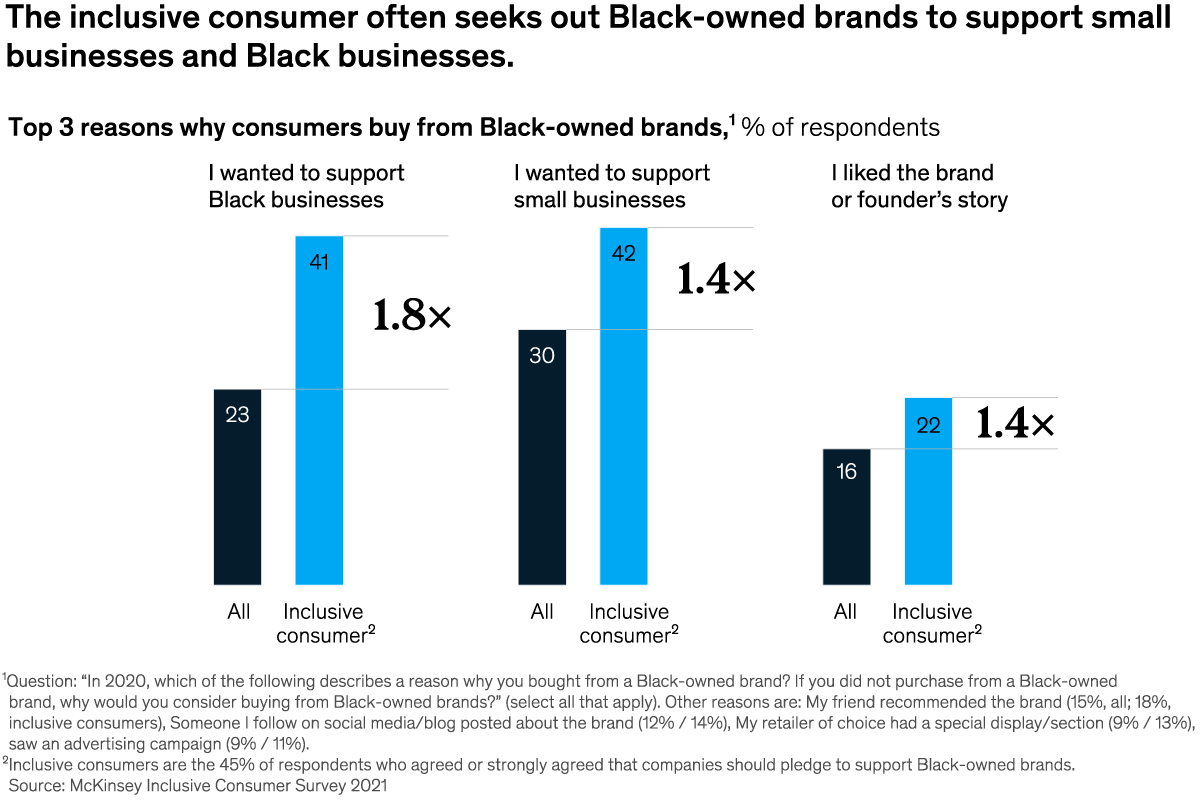
See today's chart 
Also New 

What resilience means to Nextdoor CEO Sarah Friar For Nextdoor CEO Sarah Friar, resilience requires diverse perspectives, local solutions, playbooks to help anticipate the unexpected, and a regard for unforeseen consequences. Develop resilience 


Five steps to improve innovation in the insurance industry Insurance executives are recognizing the power of innovation to accelerate the pace of company change. Yet for innovation to deliver long-term value, it must become embedded in a carrier’s DNA. Implement cross-cutting practices 


The future of insurance: Creating value, finding focus In this podcast episode, four McKinsey insurance experts discuss the industry’s struggles—and the strategic imperatives for growth in a world altered by the COVID-19 pandemic. Tune in 


Follow our thinking 



Share these insights Did you enjoy this newsletter? Forward it to colleagues and friends so they can subscribe too.
Was this issue forwarded to you? Sign up for it and sample our 40+ other free email subscriptions here.This email contains information about McKinsey’s research, insights, services, or events. By opening our emails or clicking on links, you agree to our use of cookies and web tracking technology. For more information on how we use and protect your information, please review our privacy policy. You received this email because you subscribed to the Daily Read newsletter. Manage subscriptions | Unsubscribe Copyright © 2022 | McKinsey & Company, 3 World Trade Center, 175 Greenwich Street, New York, NY 10007
by "McKinsey Daily Read" <publishing@email.mckinsey.com> - 05:07 - 7 Mar 2022 -
[Demo] Explore cloud security and app modernisation live
Sumo Logic
Save your seat before demos are full!
 Your need for real-time insights delivered as a service across multiple use cases is inevitable. But getting it all from a single, cloud-native platform? Sumo Logic is the solution. We invite you to start your cloud education journey with our March Live Demo Series, five 30-minute sessions showcasing a plethora of DevSecOps solutions in action.
Your need for real-time insights delivered as a service across multiple use cases is inevitable. But getting it all from a single, cloud-native platform? Sumo Logic is the solution. We invite you to start your cloud education journey with our March Live Demo Series, five 30-minute sessions showcasing a plethora of DevSecOps solutions in action.
Cloud Security Monitoring and Analytics, March 22nd at 12pm AEDT Companies generate data at an exponential rate, and the task of analysing customer data to produce relevant security analytics insights can be overwhelming. The Sumo Logic cloud-native platform provides granular visibility at cloud scale that empowers your team to prioritise and investigate security insights within your infrastructure. Register Cloud SIEM, March 23rd at 12pm AEDT Sumo Logic’s Cloud SIEM solution provides security analysts with enhanced visibility to seamlessly monitor their organisation’s on-prem, hybrid, and multi-cloud infrastructures. By collecting and automatically correlating all of their data, Sumo Logic’s Cloud SIEM detects threats and enables SOC teams to thoroughly understand the impact and context of an attack. Register Application Observability, March 24th at 12pm AEDT Demand for faster innovation and efficiency is driving organisations to accelerate application modernisation creating additional challenges on how to manage their reliability. Sumo Logic’s observability solution gives site reliability engineers operational visibility across the entire stack, with entity-driven correlations and actionable insights from your applications to your infrastructure. Register Software Development Optimization, March 25th at 12pm AEDT Boost your software development lifecycle with Sumo Logic’s solution created to help teams build better software faster. The Software Development Optimisation solution is designed to collect and correlate data across the entire software development process and DevOps toolchain to help teams continuously improve how they deliver software. Register Cloud SOAR, March 29th at 12pm AEDT Sumo Logic’s Cloud SOAR boosts the effectiveness of security analysts by providing automated real-time incident management responses, immediate and customisable incident reports, and invaluable insights regarding incoming alerts, ultimately enhancing the accuracy and speed at which SOC teams respond to threats. Register Don't miss the opportunity to see inside all of Sumo Logic's solutions.
Sumo Logic
I'm not interested in this series.
Sumo Logic, Level 9, 64 York Street, Sydney, NSW 2000
© 2022 Sumo Logic, All rights reserved.Unsubscribe 


by "Sumo Logic" <marketing-info@sumologic.com> - 05:01 - 7 Mar 2022 -
Any questions?
Hi MD-Since you signed up for Remote about a week ago, I thought it would be helpful to ask if you have any questions I can assist with.While international employment can be complex, we're here to help guide you and simplify the process by using the Remote platform.What questions can I address for you?Neha|Neha GuptaGlobal Employment AdvisorIf you'd like me to stop sending you emails, please click here
by "Neha Gupta" <neha@remote.com> - 11:30 - 7 Mar 2022 -
Is your organization future-proof? A leader’s guide
Leading Off
Back to the future .
Share this email 



ESSENTIALS FOR LEADERS AND THOSE THEY LEAD 
With this year’s Super Bowl viewership reaching more than 112 million people—an all-time high—one can imagine the National Football League (NFL) spiking the football in celebration. But “the danger of complacency is real,” says the NFL’s head of marketing, noting the urgency of future-proofing the NFL so that it holds onto everyone in its fan base and also entices future fans. The football league is not alone in its fight for attention in a fiercely competitive environment. One of the fundamental roles of leaders in any industry is to not only navigate the present but also create stronger organizations that can withstand future challenges. This week, let’s explore how you can future-proof your organization and flex the skills that are crucial in a world of flux. AN IDEA 
Develop skills to strengthen adaptability Coping with uncertainty is not an easy undertaking. Yet, adaptability is a critical factor to move forward successfully, especially in times of great change or transformation. Organizations must be proactive in preparing their leaders to manage complex and pressure-filled situations. Future-proofing your organization involves countering the “adaptability paradox”—the tendency to default to familiar patterns and behaviors in times of stress, a propensity that prevents the learning and innovation necessary to navigate stressful situations in the future. Rather than merely bouncing back from difficult events, develop the skills to “bounce forward.” What skills are needed to deliver on your strategy, and how will your people, processes, and technology interact as they work toward developing those skills? Companies that organize successfully for the future examine and define their purpose, form distinctive cultures, nurture diversity, and use data and technology creatively. 
A BIG NUMBER 9 That’s the number of key organizational imperatives on which future-ready organizations take action, according to McKinsey research. These characteristics—centered on “who we are,” “how we operate,” and “how we grow”—make up an organization’s core identity, and the approaches to each category must change as the old operating conditions transform. Leaders can seize this time of change and uncertainty to unlock new and improved operating models that prioritize flexibility, speed, and innovation, as well as to address employees’ needs for connection, purpose, and strong organizational culture. 

A QUOTE “I think the fundamental role of a leader is to look for ways to shape the decades ahead, not just react to the present, and to help others accept the discomfort of disruptions to the status quo.” That’s just one “Aha!” moment in this interview with Indra Nooyi, former CEO of PepsiCo and author of My Life in Full: Work, Family, and Our Future. Nooyi, the first woman of color and immigrant to take the helm at a Fortune 50 company, describes the lessons she has learned from her experiences navigating demanding leadership roles and how today’s leaders can create a better future. From the broken leadership pipeline for women to the daily trade-offs that can only be addressed by strengthening support structures, Nooyi identifies several priorities that should be central to the leadership agenda. 
A SPOTLIGHT INTERVIEW 
Where is the sweet spot between flexibility and stability when you structure an organization for the future? The answer may be elusive, but Julian Fieres, the head of transformation, strategy, and sustainability at German auto supplier ZF Friedrichshafen, offers some insights in this interview with McKinsey. Fieres has led the rollout of the company’s “helix” model, where people leadership and product lines run on separate axes. The model has led to streamlined and centralized operations and opportunities to optimize resource allocation, focusing on leaders’ strengths and the skills that will be needed in the future. Fieres says that the new structure has required a culture shift, but one that may be a boon for employees: “Suddenly their fates, their futures, their livelihoods are no longer inherently linked to a product that might be at the end of its life cycle. Their livelihoods are linked to the success of the overall organization.” 
FAST FORWARD 
Last year, the ever-evolving pandemic continued to have powerful effects on organizations and the economy. This interactive feature captures 12 significant shifts that occurred in 2021, highlighted by McKinsey research and explored through data visualizations. Topics range from the economic benefits of prioritizing health to the productivity and growth driven by investment in intangibles such as research and human capital. These trends, while not exhaustive, put into focus some of the long-term changes set in motion by the pandemic and how they have and will continue to affect our work and personal lives. Lead foresightedly. — Edited by Dana Sand, an editorial production manager in McKinsey’s Cleveland office 

Follow our thinking 



Share these insights Did you enjoy this newsletter? Forward it to colleagues and friends so they can subscribe too.
Was this issue forwarded to you? Sign up for it and sample our 40+ other free email subscriptions here.This email contains information about McKinsey’s research, insights, services, or events. By opening our emails or clicking on links, you agree to our use of cookies and web tracking technology. For more information on how we use and protect your information, please review our privacy policy. You received this email because you subscribed to the Leading Off newsletter. Manage subscriptions | Unsubscribe Copyright © 2022 | McKinsey & Company, 3 World Trade Center, 175 Greenwich Street, New York, NY 10007
by "McKinsey Leading Off" <publishing@email.mckinsey.com> - 03:11 - 7 Mar 2022 -
Do you have what it takes to be a great CEO?
McKinsey&Company
A tough role gets even tougher .

What the best CEOs do The news • Walking away. Over the past few years, C-suite executives and other senior leaders have struggled with the demands of work and family life along with everyone else, and many have joined the ranks of millions who are resigning. In the last quarter of 2021, the number of departing CEOs rose 16% from a year earlier. Today’s top bosses are under tremendous pressure, not just to manage business operations but also to convey confidence to an anxious and overwhelmed workforce. [NBC News] • For those who stay. Whether in charge of a large company or running a small team, leaders continue to face the stiff headwinds of uncertainty. To face these challenges successfully, leaders should keep three areas top of mind: how to manage the present while creating the space to think about future goals, how to solve problems that are entirely new to a company, and how to manage the morale of rank-and-file employees. [HBR] 
“If you look at the 200 [CEOs] we identified during their tenure, they created five trillion more dollars of value than their peers. That’s the GDP of Japan.” 
Our insights • Why it matters. The role of the CEO is getting more complex. “There’s so much in that one role [that reflects] the internal, external, present, future,” said Carolyn Dewar, an author of the new McKinsey book CEO Excellence: The Six Mindsets That Distinguish the Best Leaders from the Rest. “The need to be able to think through a whole system view and galvanize a whole group around you to get this job done is only going to be more important. It’s going to take a village, and it’s a village that’s led by the CEO.” • The best from the rest. McKinsey found that CEOs who are truly excellent think differently than most. “They think of trends and they think of endowments as not just ‘what I’m given,’ but ‘How do I turn those into opportunity?’” said Scott Keller, another of the book’s authors. For more on applying the fundamentals of leadership to today’s top challenges, the CEO’s changing role, and why great CEOs are bold, read the full interview. — Edited by Barbara Tierney Lead better 
Was this forwarded to you? Sign up here. Or send us feedback — we’d love to hear from you. 

Follow our thinking 


This email contains information about McKinsey’s research, insights, services, or events. By opening our emails or clicking on links, you agree to our use of cookies and web tracking technology. For more information on how we use and protect your information, please review our privacy policy. You received this email because you subscribed to the On Point newsletter. Manage subscriptions | Unsubscribe Copyright © 2022 | McKinsey & Company, 3 World Trade Center, 175 Greenwich Street, New York, NY 10007
by "McKinsey On Point" <publishing@email.mckinsey.com> - 12:23 - 7 Mar 2022 -
Last Chance! RSVP Innovation Talk Webinar on 9 March 2022
Schneider Electric
Don't miss! Innovation Talk WebinarEcoStruxure IT Expert. Gives you one view to proactively monitor and manage your IT equipment from wherever-you-are. Gain more than alarms, unlock full visibility, predictive management, and data-driven recommendations to mitigate security and failure risks of your local edge, distributed IT, and data center.
Join us at Hands on / Hands off Monitoring Capabilities Webinar to learn more on our solutions for your business.
Don't miss! Get a chance to win Lucky Draw Prizes when you attend the webinar. When?Date: Wednesday 9 March 2022
When?Date: Wednesday 9 March 2022
Time: 13:15 - 15:30 Where?Webex Platform
Where?Webex Platform+ Lifecycle Services From energy and sustainability consulting to optimizing the life cycle of your assets, we have services to meet your business needs. Schneider Electric
46 Rungrojthanakul Building. 1st, 10th, 11th Floor, Ratchadapisek Road. Huaykwang
Bangkok - 10310, Thailand
Phone +662 617 5500© 2022 Schneider Electric. All Rights Reserved. Schneider Electric is a trademark and the property of Schneider Electric SE, its subsidiaries and affiliated companies. All other trademarks are the property of their respective owners.
by "Schneider Electric" <reply@se.com> - 09:01 - 6 Mar 2022



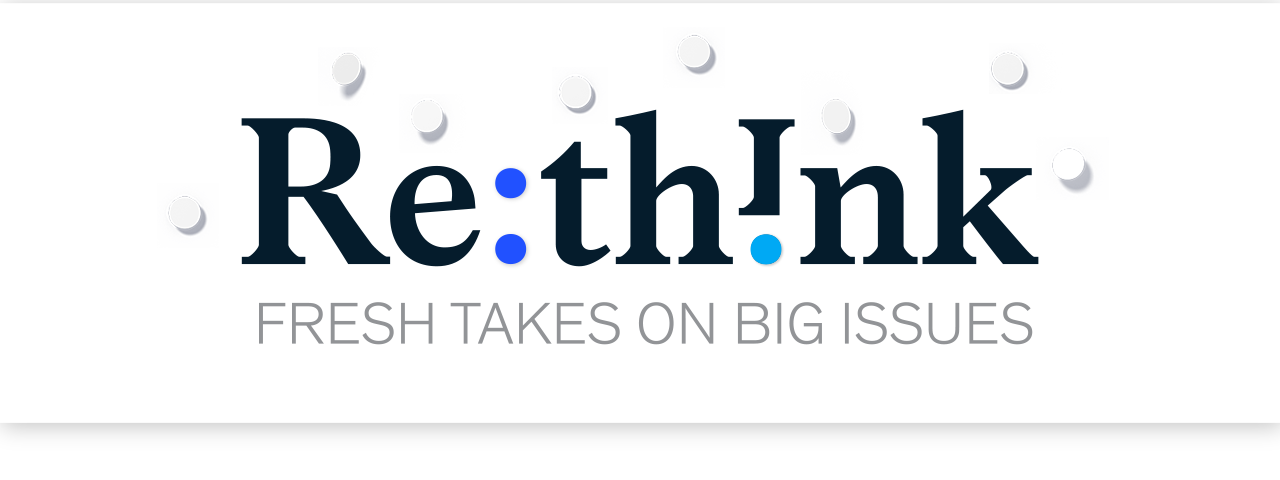



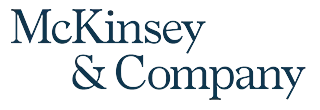
.png?width=1200&upscale=true&name=Group%201%20(6).png)

